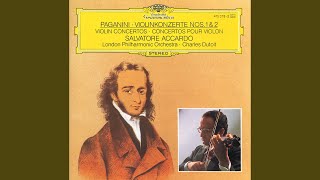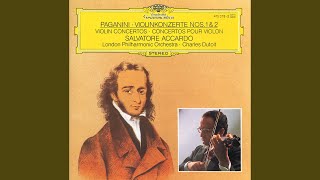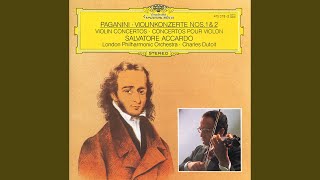Sunday, 04 January, 2026г.
















Где искать: по сайтам Запорожской области, статьи, видео ролики
пример: покупка автомобиля в Запорожье
Niccolò Paganini: Violin Concerto No.2 in B Minor, Op.7, MS 48, Massimo Quarta (violin)
Niccolò Paganini - Violin Concerto No. 2 in B Minor, Op. 7, MS 48, Massimo Quarta (soloist and conductor), Genoa Teatro Carlo Felice Orchestra
1. Allegro Maestoso (cadenza by M. Quarta) – 00:00
2. Adagio – 16:25
3. Rondò Andantino - Allegretto moderato – 23:32
Niccolò (or Nicolò) Paganini (27 October 1782 – 27 May 1840) was an Italian violinist, violist, guitarist, and composer. He was the most celebrated violin virtuoso of his time, and left his mark as one of the pillars of modern violin technique.
The Israeli violinist Ivry Gitlis once referred to Paganini as a phenomenon rather than a development. Though some of the techniques frequently employed by Paganini were already present, most accomplished violinists of the time focused on intonation and bowing techniques. Another aspect of Paganini's violin techniques concerned his flexibility. He had exceptionally long fingers and was capable of playing three octaves across four strings in a hand span, an extraordinary feat even by today's standards.
The Violin Concerto No. 2 in B minor, Op. 7, was composed by Niccolò Paganini in Italy in 1826. In his Second Concerto, Paganini holds back on the demonstration of virtuosity in favor of greater individuality in the melodic style. The third movement of Paganini's Second Concerto owes its nickname "La Campanella" or "La Clochette" to the little bell which Paganini prescribes to presage each recurrence of the rondo theme. The character of the bell is also imitated in the orchestra and in some of the soloist's passages featuring harmonics. The outcome is a very transparent texture, which gains extra charm of gypsy coloration of the rondo theme. This movement has served as the basis of compositions by other composers, such as the Étude S.140 No.3 "La campanella" by Liszt, and Strauss - Walzer à la Paganini Op.11.
Похожие видео
Мой аккаунт


 У вашего броузера проблема в совместимости с HTML5
У вашего броузера проблема в совместимости с HTML5


